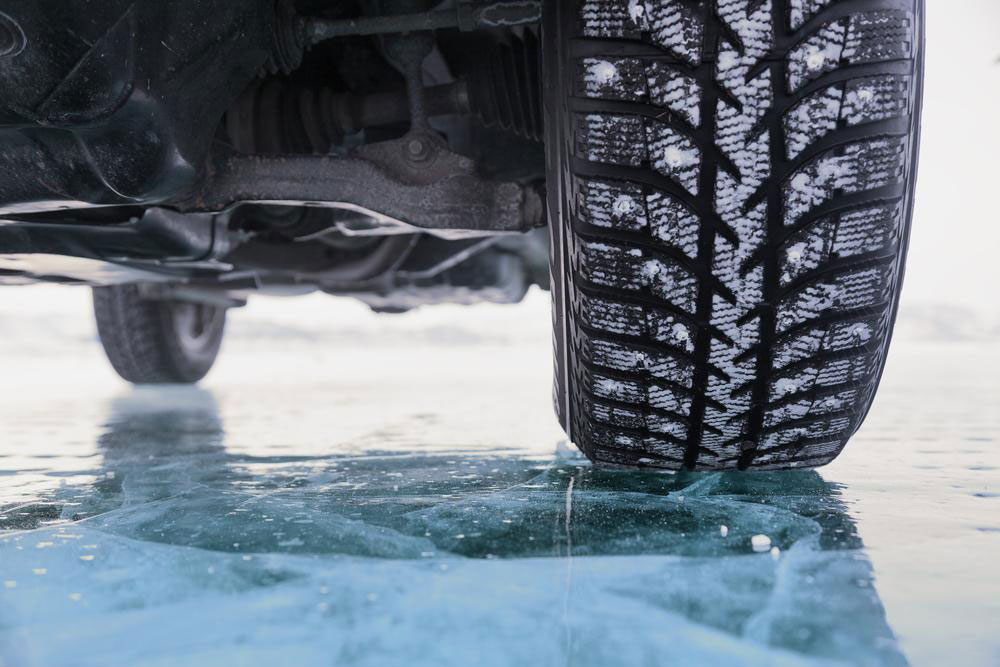Comprehensive Guide to Choosing the Best Winter Tires for Optimal Safety and Performance
This comprehensive guide provides crucial insights into selecting the best winter tires, emphasizing safety, traction, and durability. It details factors like tread patterns, rubber quality, and industry standards, helping drivers make informed decisions for winter driving. Proper installation timing and maintenance tips are also included to ensure maximum performance throughout the cold season, making this an essential resource for vehicle owners preparing for winter.

As winter approaches, selecting the right tires for icy, snowy, and cold conditions becomes crucial for maintaining safety and vehicle performance. Winter tires, also known as snow tires, are specially designed to handle challenging winter environments by providing superior traction, braking, and handling in low temperatures. However, with numerous brands and models available in the market, making an informed choice requires understanding the unique features and specifications that differentiate effective winter tires from standard all-season or summer tires.
Winter tires are manufactured with specialized rubber compounds that remain flexible even when temperatures plummet well below freezing, often as low as -30°C (-22°F). This flexibility allows the tires to grip icy and snowy surfaces more effectively. The ability of the rubber to stay pliable in cold weather is a key factor that impacts your safety, especially during harsh winter storms or icy mornings. When choosing winter tires, it’s important to consider various technical aspects, such as tread patterns, depth, and rubber composition, to ensure you get the perfect match for your vehicle’s needs and driving conditions.
Key Factors to Consider When Selecting Winter Tires
1. Tread Pattern and Depth
The tread design of winter tires plays a vital role in how well they perform on snow, ice, and slush. Tire treads with deeper grooves are capable of channeling snow and slush away from the contact patch, maintaining better grip. Winter tires often feature a more aggressive tread pattern compared to all-season tires, with larger, more prominent sipes (thin slits across the tread) that provide additional biting edges for improved traction in icy conditions. Ensuring the tread depth is adequate (generally around 10/32 inch or more) is essential for maintaining traction throughout the winter season.
2. Rubber Composition
The type of rubber compound used in winter tires significantly influences their performance. Tires designed for cold climates incorporate specialized blends that stay softer and more flexible at low temperatures. This flexibility improves grip on icy surfaces and allows the tire to conform better to irregular terrains like snow or slush. Cheaper or poorly formulated tires tend to harden in cold weather, reducing traction and increasing the risk of accidents.
3. Size and Width
Choosing the right size and width is crucial. Narrower tires tend to perform better on snow and ice because they exert less pressure on the surface, allowing them to cut through snow and ice more effectively. Conversely, wider tires may provide more traction on dry or wet roads but can struggle in snow or icy conditions. Always consult your vehicle’s manufacturer recommendations to ensure optimal fit and performance.
4. Compliance with Industry Standards
Quality assurance is vital when selecting winter tires. Look for tires that carry symbols such as the Three Peak Mountain Snowflake (3PMSF) or the M+S (Mud and Snow) label. The 3PMSF symbol indicates the tire has been tested and approved for severe snow conditions, ensuring it meets or exceeds industry safety standards. Avoid tires without these markings, as they may not provide adequate performance in winter weather.
5. Timing and Installation
Timing your switch to winter tires is essential for maximum safety. Experts recommend installing winter tires when temperatures consistently stay below 7°C (45°F). Waiting until the first snowfall or when roads become icy can be risky, as summer or all-season tires may harden and lose grip in cold conditions. Additionally, it’s advisable to switch to summer or all-season tires once winter is over, normally in early spring, to optimize tire longevity and safety.
6. Road Conditions and Terrain
The type of terrain you usually drive on influences the choice of winter tires. If you frequently encounter heavy snow or icy slopes, look for tires with wider sipes and deeper treads designed for heavy snow. For icy roads, ice radials with specialized tread compounds and sharper edges can provide better grip. For mixed conditions, consider all-weather tires that are approved for winter use but are also versatile enough for transitioning seasons.
7. Vehicle Compatibility
Different vehicles require different types of winter tires. For example, front-wheel drive vehicles benefit from tires with good traction on the front, while all-wheel or four-wheel-drive vehicles should have matching tires on all wheels to maintain stability and control. Lightweight cars may need different treads compared to larger SUVs or trucks. Always refer to your owner’s manual or consult with a professional tire dealer to ensure you select the appropriate tires for your vehicle’s make and model.
8. Uniform Replacement for Safety
For optimal safety, it is recommended to replace all four tires simultaneously. Mismatched tires—such as combining new tires with worn ones—can lead to uneven gripping, slippage, and compromised handling. Replacing all four tires ensures balanced traction and stable handling, especially important in winter driving conditions where safety can depend on precise control.
9. Durability and Warranty
Investing in durable tires with a good warranty can save money and headaches in the long run. Most winter tires offer a lifespan of roughly 6,200 miles per season, but this can vary based on driving habits, road conditions, and tire maintenance. Always check the warranty coverage, including mileage limits and replacement policies, to ensure you have support if the tires wear prematurely.
Additional Tips for Maintaining Winter Tires
Regularly check tire pressure, as cold temperatures can cause pressure drops, reducing traction and increasing wear.
Inspect tires for cuts, punctures, or uneven wear patterns that may indicate alignment issues or potential hazards.
Store winter tires properly during the off-season, in a cool, dry place, away from direct sunlight or sources of ozone which can degrade rubber.
Have your tires balanced and aligned regularly to prolong tire life and ensure safe driving conditions.
Final Thoughts
Choosing the right winter tires is a vital step in preparing your vehicle for the challenges of winter driving. By paying attention to tread design, rubber composition, sizing, and industry certifications, you can significantly improve your safety and driving experience. Proper timing of installation and consistent maintenance further enhance performance and durability. Remember that the right set of winter tires can make the difference between a safe journey and dangerous accidents in icy and snowy conditions. Prioritize quality, compliance with standards, and compatibility with your vehicle to ensure a secure and comfortable winter driving season.





